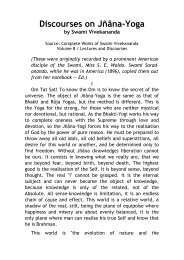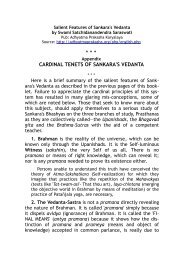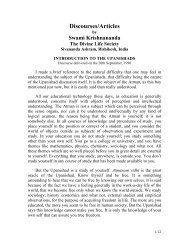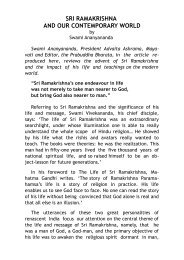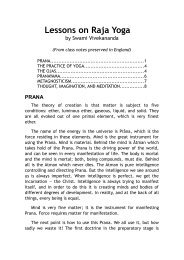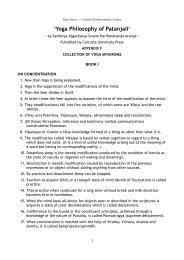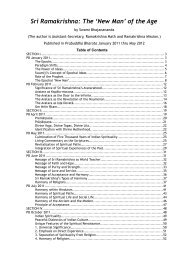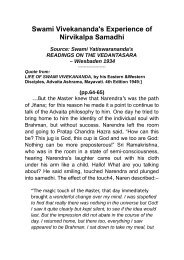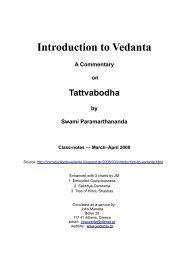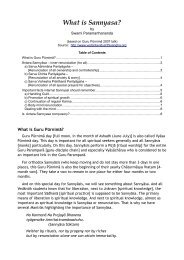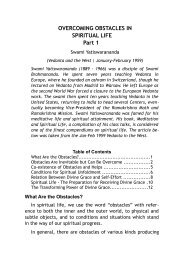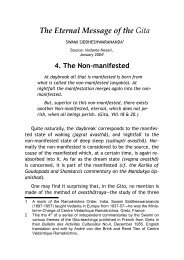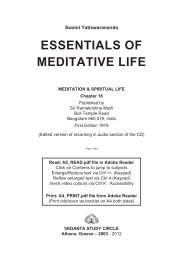Concentration & Meditation - Vedanta
Concentration & Meditation - Vedanta
Concentration & Meditation - Vedanta
Create successful ePaper yourself
Turn your PDF publications into a flip-book with our unique Google optimized e-Paper software.
<strong>Concentration</strong> and <strong>Meditation</strong> 5ception. It means turning the mind or the self back upon itssource. Sri Ramakrishna explains this by the parable of the policesergeant who goes about his rounds in the dark with a lantern(which has dark glass on three sides) in his hands. With that lighthe can see others but they cannot see him, unless he turns thelantern towards himself. (Gospel of Sri Ramakrishna, p.107)In the same way, with the light of the self we can see externalobjects and movements of thoughts, but if we want to see God,we must focus this light inward. And this is what meditationmeans. To turn the habitually outgoing mind inward to its sourceis an admittedly difficult task.This, then, is the first difference between meditation and ordinaryconcentration: meditation is the result of the focusing ofconsciousness on its true source or centre. The Tantras speak ofdifferent centres of consciousness but the Upanisads point to thespiritual heart as the true centre of one’s consciousness. Thoughthe beginner can to some extent hold the mind in the region ofthe physical heart, he has usually no idea of what the spiritualheart — the true centre of consciousness — means.In most people this higher centre remains dormant or veiled,but through continence and prayer it can be developed. Unlessthe aspirant discovers this spiritual centre, his mind will wanderduring meditation.It should be understood that trying to drive the mind inward,as a shepherd drives sheep into the pen, is not meditation. Truemeditation is the result of the natural inwardness or interiority(pratyak pravanata) of the mind caused by an inward pull. This inward“pull” comes from one’s higher centre of consciousness.And the higher centre will exert this pull only when it is open andactive. Then the mind comes to rest in its own source, as a birdcomes to roost in its own nest. This resting or fixing of the mind iscalled dharana, without which meditation is difficult.Secondly, in most forms of ordinary concentration the senseorgans are active and contact with the external world is not cutoff. But during meditation, which needs a higher degree of concentration,the mind alone is active and contact with the externalworld is cut off. The yogis call this state ekendriya—the state inwhich one indriya or sense organ (namely the manas, or mind,which the yogis regard as the sixth sense organ) alone is active.



